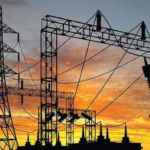
India recorded 1,010 active Covid infections on May 26, breaking the 1,000 mark for the first time in almost three years. Kerala leads with over 40 percent of cases, followed by Maharashtra and Delhi. Punjab reported its first case on the same day, showing the virus is spreading wider.
What does this mean for the average person? The rising cases remind us that Covid hasn’t gone away yet. It’s like that annoying sequel to a movie you hoped would never come. Except this one’s real and quietly creeping into new states.

Kerala alone accounts for around 400 cases, Maharashtra has 210, and Delhi stands at 104. These three states together cover nearly 74 percent of all infections.
Since May 19, India has seen six deaths linked to Covid — three in Maharashtra, two in Kerala, and one in Karnataka. The numbers may seem small, but the upward trend is hard to ignore.
Meanwhile, vaccination rates tell a mixed story. Although India boasts high first-dose coverage, only 25 percent of adults have taken the precautionary dose. The second dose coverage itself is slightly behind, with 93 percent completing it among those who got the first shot.
Younger groups lag further behind. Among 12-14 year olds, only 78.8 percent have received their second dose. The numbers improve with age: 86.6 percent for 15-18 and 93.9 percent for adults 18 and older.
Some states are more vulnerable due to low booster coverage. Meghalaya, Nagaland, and Punjab have less than 9 percent of their populations protected with a precautionary dose. This leaves many at risk as the virus quietly resurges.
So why should you care? If you’ve been putting off your booster, now is the time to get it. It’s not just about avoiding illness; it’s about stopping the virus from taking another run at us.
Also Read Covid Makes a Comeback in Delhi, Mumbai, Bengaluru: Should You Worry Now?












